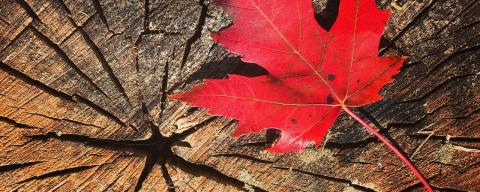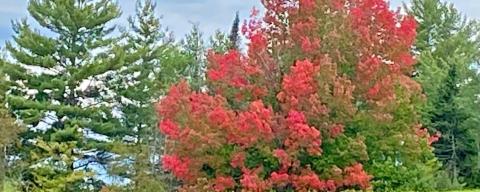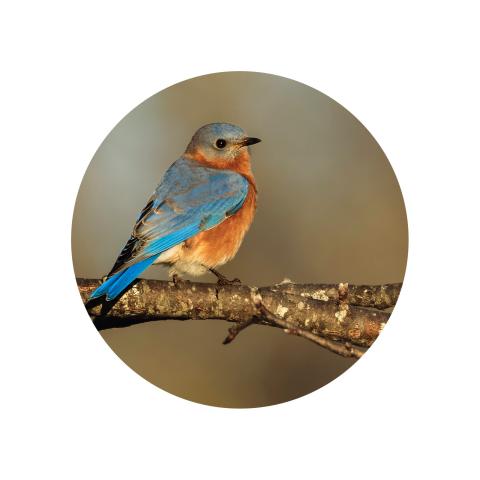Red Maple
Howdy folks! Welcome to September, the month that brings us Autumn, at least according to the calendar. With the fall season comes cooler, crisp, sometimes breezy days, followed by cool, and even chilly, nights. This is my favorite season of the year. The temps are comfortable, and just the smell when walking in the woods brings a sense of solitude and comfort. Here in New Hampshire, and all of New England, the fall colors are very often breathtaking and bring visitors from far and wide. With all that in mind, let’s talk a bit about one of the first trees to show us its autumn splendor, the Red Maple. The Red Maple, also called White Maple, Soft Maple, or Swamp Maple, has already begun turning red, especially in some of the lower, wetter spots along roadways and in the valleys. Red Maples are also often the first to ‘bud’, flower, set seeds, and leaf-out in the spring. The signature red buds signal the beginning of things growing and coming alive again after a long New England winter. The early show of their red color in the late summer is also a signal, telling us that the autumn season is upon us.
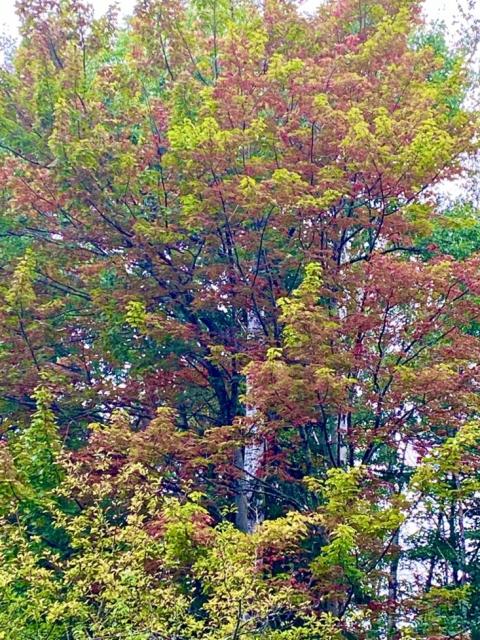
As saplings, young trees, their bark is smooth and light gray in color. As they get older the bark turns darker in color and gets more platy in texture. The leaves, very much like those of the Sugar Maple, are lobed. These five lobes extend out in finger-like fashion from a central point, much like the palm of your hand. The lobes of the Sugar Maple are typically more defined and pronounced, and the edges of the lobes are smoother than those of the Red Maple. The Red Maple lobes are more toothed and a little more subtle.
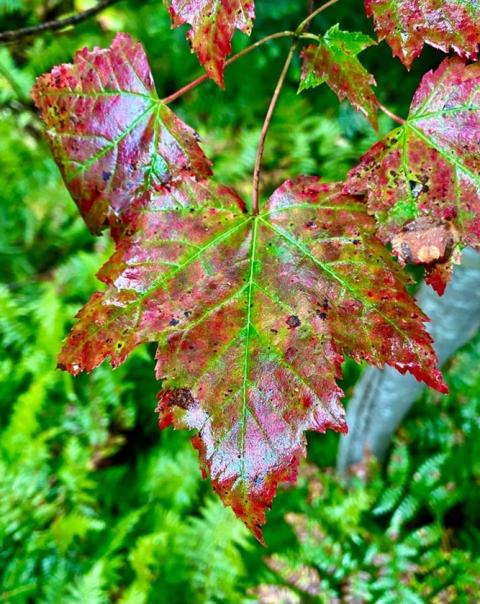
See that the lobes of the Red Maple are a little less pronounced and are more 'toothed' around the edges.
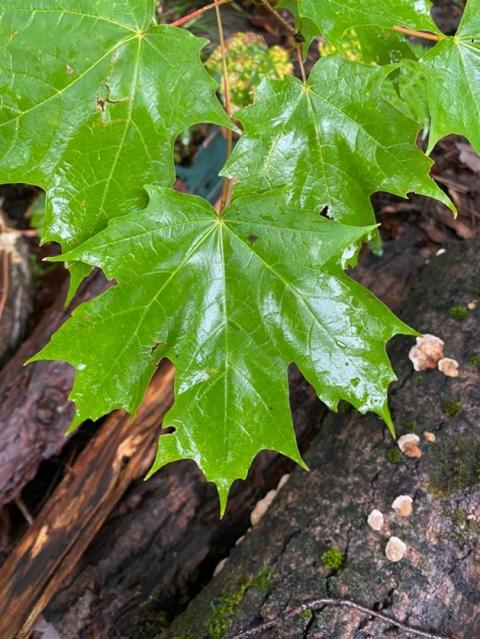
While the lobes of the Sugar Maple are more distinguishable, and the edges are much smoother.
Both the Red and Sugar Maples may be tapped for maple syrup in the spring. Typically, the Sugar Maple has a higher sugar content, although Red Maple will also produce good sap. Some say the sap from Red Maple is darker than that of Sugar Maple when processed. Others experience slightly lower sugar content. However, all of the differences found between Red Maple and Sugar Maple sap are very similar to the differences in Sugar Maple from year to year and location to location.
Red Maple is also sought after for lumber. Although not typically as desired as Sugar Maple, it is often used in flooring, craft wood, and furniture. With its reddish tint to the lumber, it certainly may add to the design of a piece of furniture. Surprisingly enough, it is also used in the baseball bat industry, especially that grown here in the northern areas.
So, when you think about Red Maple, don’t discount its importance as a valuable tree, commercially, environmentally, and aesthetically. For it is the Red Maple that typically gives us the brilliant red colors across the autumn landscapes.
Have a question about your woods? Contact your Extension County Forester today!
Do you love learning about stuff like this? Subscribe to the NH Woods & Wildlife Newsletter.
A quarterly newsletter providing private woodlot owners in New Hampshire with woodlot management news, pest updates, resources, and more.
